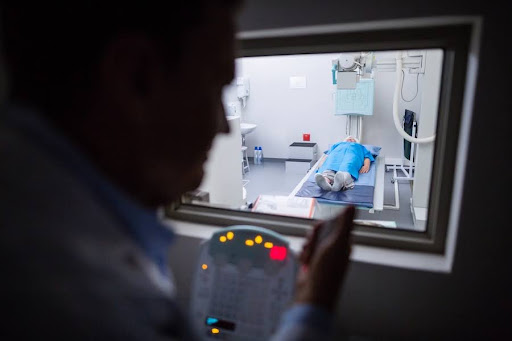Sarcoma Surveillance: Cutting-Edge Techniques In Detection
Sarcoma, a rare form of cancer, presents unique challenges in its detection and surveillance. As medical technology advances, cutting-edge techniques have emerged that enable more accurate and timely diagnosis.
In this piece, we will delve into the most recent advancements and developments. In sarcoma surveillance, shedding light on the breakthroughs revolutionizing the field.
With a focus on precision and efficiency, these new techniques leverage advanced imaging technologies, such as MRI and PET-CT scans, to detect and monitor the progression of sarcomas. Additionally, molecular testing and biopsy techniques are being refined, providing crucial insights into the specific genetic makeup of these tumors. With this information, healthcare professionals can tailor treatment plans and interventions to individual patients, optimizing outcomes and improving overall prognosis.
This article will explore the complexities involved. These cutting-edge techniques provide a comprehensive overview of the advancements in sarcoma surveillance. Whether you are a healthcare provider or an individual seeking information about sarcoma, this article equipping oneself with knowledge can lead to empowerment. You make informed decisions and take control of your health. Stay tuned as we uncover the latest techniques shaping sarcoma detection’s future.
Understanding Sarcoma: Types And Risk Factors
Sarcoma is a type of cancer that develops in the body’s soft tissues, such as muscles, fat, nerves, tendons, and blood vessels. There are various types of sarcoma, including osteosarcoma, chondrosarcoma, and liposarcoma, each with unique characteristics and risk factors. These risk factors may include genetic predisposition, exposure to certain chemicals or radiation, and previous treatment with radiation therapy.
Early detection plays a crucial role in the successful treatment of sarcoma. However, due to its rarity and diverse nature, sarcoma is often misdiagnosed or diagnosed at an advanced stage. This highlights the importance of implementing effective surveillance techniques that can aid in the early detection and monitoring of sarcomas.
Traditional Techniques In Sarcoma Surveillance
Traditional techniques for sarcoma surveillance include physical examinations, imaging tests, and biopsies. Physical examinations involve
- a thorough examination of the affected area,
- looking for any signs of lumps,
- swelling, or
- other abnormalities.
Imaging tests, such as X-rays and CT scans, visually represent the tumors and their location. Biopsies, on the other hand, involve removing a tissue sample for further analysis, allowing healthcare professionals to determine the type and grade of the sarcoma.
While these traditional techniques have been adequate to some extent, they have limitations regarding accuracy and timeliness. This has led to the development of newer, more advanced techniques that can enhance the surveillance and detection of sarcoma.
Emerging Technologies In Sarcoma Detection
Significant advancements in sarcoma detection have occurred in recent years. These emerging technologies aim to improve the accuracy, efficiency, and accessibility of sarcoma surveillance. One such technology is advanced imaging techniques like MRI and PET-CT scans.
MRI (Magnetic Resonance Imaging) uses powerful magnets and radio waves to create detailed images of the body’s soft tissues. This allows healthcare professionals to visualize tumors and assess their size, location, and potential spread. PET-CT scans combine the power of positron emission tomography (PET) and computed tomography (CT) to provide a comprehensive view of the tumors, their metabolic activity, and their interaction with surrounding tissues.
Imaging Techniques For Sarcoma Surveillance
Advanced imaging techniques, such as MRI and PET-CT scans, have revolutionized sarcoma surveillance by providing more accurate and detailed information about tumors. These techniques enable healthcare professionals to visualize the tumors in real-time, allowing for better planning of treatment strategies and monitoring of treatment response.
MRI scans offer high-resolution images that can help differentiate between different types of sarcomas and determine the extent of tumor involvement. PET-CT scans, on the other hand, provide functional information by highlighting areas of increased metabolic activity. This can be particularly useful in identifying areas of tumor recurrence or metastasis.
Biomarkers And Molecular Testing In Sarcoma Surveillance
Sarcoma surveillance has evolved with the integration of advanced imaging techniques, biomarkers, and molecular testing. Biomarkers, which are measurable substances in the body, play a crucial role in identifying disease presence and treatment response. In sarcoma, biomarkers offer insights into specific genetic alterations or mutations associated with various subtypes of the disease, aiding in accurate diagnosis and prognosis assessment.
Furthermore, molecular testing, encompassing the analysis of genetic material like DNA or RNA, provides detailed information about the genetic landscape of sarcomas. By identifying specific mutations or alterations in tumor cells, molecular testing offers valuable insights into disease progression and guides treatment decisions. In this context, OncoTrail by RGCC-North America emerges as a groundbreaking tool, utilizing phenotype biomarkers to characterize the tissue origin of sarcoma cells. This comprehensive approach enhances sarcoma surveillance by providing personalized insights into the disease’s molecular profile and facilitating targeted treatment strategies tailored to individual patients.
Role Of Artificial Intelligence In Sarcoma Surveillance
Artificial intelligence (AI) has emerged as a powerful tool in various healthcare fields, including sarcoma surveillance. AI algorithms can analyze large amounts of data and identify patterns or anomalies that may not be apparent to the human eye. In sarcoma surveillance, AI can assist in interpreting imaging scans, identify potential biomarkers, and predict treatment response.
By leveraging AI, healthcare professionals can enhance their decision-making process, improve accuracy in sarcoma detection, and optimize treatment outcomes. AI algorithms can also contribute to developing predictive models that can aid in the early detection of sarcoma and identify individuals at higher risk.
Collaborative Approaches In Sarcoma Surveillance
With the complex nature of sarcoma, a collaborative approach involving multidisciplinary teams is essential for effective surveillance and treatment. These teams may include oncologists, radiologists, pathologists, surgeons, and other healthcare professionals with expertise in sarcoma management.
Collaboration among these specialists allows for a comprehensive sarcoma evaluation, considering factors such as tumor location, size, grade, and genetic characteristics. It also enables the development of personalized treatment plans that consider the individual’s needs and circumstances.
Conclusion: The Future Of Sarcoma Surveillance
The field of sarcoma surveillance is rapidly evolving, driven by technological advancements and a deeper understanding of the disease. Cutting-edge techniques, such as advanced imaging, molecular testing, artificial intelligence, and collaborative approaches, are revolutionizing the detection and monitoring of sarcomas.
These techniques offer the potential for earlier and more accurate diagnosis, personalized treatment plans, and improved outcomes for individuals diagnosed with sarcoma. As research continues and technology advances, the future of sarcoma surveillance looks promising, with the potential to save lives and improve the quality of life for those affected by this rare form of cancer.
In conclusion, sarcoma surveillance continually evolves, with new techniques and technologies being developed to improve early detection and monitoring. By staying informed about the latest advancements in sarcoma surveillance, healthcare professionals and individuals can work together to ensure timely interventions and optimized treatment outcomes. Together, we can make a difference in the fight against sarcoma.
Stay in touch to get more updates & news on Fashion Ablepro!




